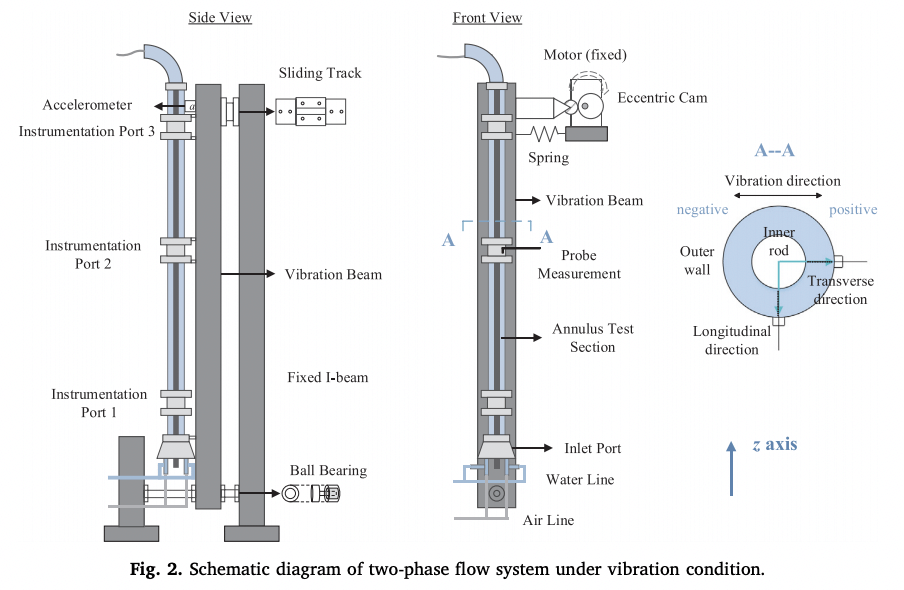Abstract
Earthquake vibrations have great impacts on two-phase flow in the reactor core. In this paper, numerical simulations were conducted to identify the air-water two-phase distribution in a vertical upward annular channel under horizontal vibration condition. The inner and outer diameter of the annular channel are 19.1 mm and 38.1 mm. The simulations were performed based on the two-fluid Euler-Euler modeling framework. Benchmark simulations for bubbly flow under stationary condition were firstly conducted to validate the up-to-date interfacial force models. Applicability of the interfacial force models were evaluated and a set of Ishii-Zuber drag force model, Tomiyama lift force model, Frank wall lubrication force model and Burns turbulent dispersion force model was found to provide the best agreement with experimental results. Based on this work, two-phase flow distributions under vibration condition were studied. Horizontal vibration of the annular channel was simulated by introducing simple harmonic motion. The vibration frequency and vibration amplitude were set to 1.97 Hz and 9.5 mm, respectively. Additional interfacial force caused by inertial effect was imposed on disperse bubbles under vibration condition, which promoted the lateral migration of bubbles. The numerical results showed that the distributions of local interfacial parameters varied periodically along the vibration direction. A maximum increase of about 32% was observed in the peak void fraction compared to that under stationary condition for case 3. But the distribution of local flow parameters remained unchanged in the direction perpendicular to the vibration. A good consistency between the simulation results and the experimental data was found. The comparison results indicate that the present modeling method is able to predict the two-phase distribution of bubbly flow under vibration condition. But an inhomogeneous model considering bubble interactions and grouping is suggested for two-phase flow beyond bubbly regime.

